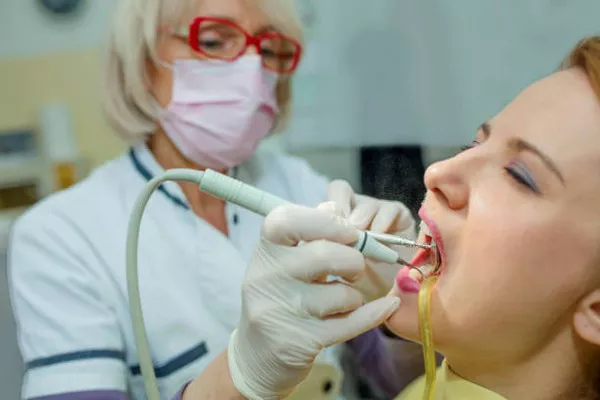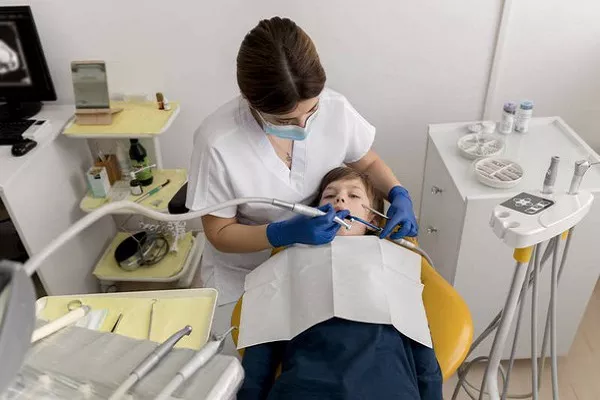In the realm of oral health, identifying potential issues early is key to maintaining a confident smile and preventing more severe problems down the line. One such concern that often lurks in the shadows is gum disease. In this comprehensive guide, we’ll delve into the intricacies of how to recognize if you have gum disease, ensuring you’re armed with the knowledge needed to take proactive measures for your oral well-being.
1. Understanding the Silent Culprit: Gum Disease Explained
Gum disease, also known as periodontal disease, is a common yet often overlooked oral health issue that can wreak havoc on your gums and teeth if left untreated. It typically begins with gingivitis, an inflammation of the gums caused by the accumulation of plaque, the sticky film of bacteria that forms on your teeth. As the disease progresses, it can lead to periodontitis, a more severe condition that can result in tooth loss. Recognizing the signs early is crucial for effective intervention.
1.1 Recognizing the Initial Warning Signs: Gingivitis
Gingivitis is the earliest stage of gum disease and is often characterized by red, swollen gums that bleed easily during brushing or flossing. Paying attention to these subtle signs can be the first line of defense in preventing the progression to more severe stages.
1.1.1 Incorporating Effective Oral Hygiene Habits
To combat gingivitis, prioritize regular brushing and flossing. Using an antimicrobial mouthwash can also help control the bacteria responsible for the inflammation, promoting healthier gums.
1.1.2 Scheduling Regular Dental Check-ups
Routine dental check-ups are essential for early detection. Your dentist can identify signs of gingivitis and provide guidance on improving your oral care routine.
2. The Sneaky Culprit: Silent Symptoms of Gum Disease
Gum disease doesn’t always manifest with obvious symptoms, making it imperative to be vigilant about any changes in your oral health. Recognizing the subtler signs can make all the difference in early detection.
2.1 Halitosis: More Than Just Bad Breath
Persistent bad breath, or halitosis, can be a silent indicator of gum disease. The bacteria causing gum inflammation release toxins that contribute to foul-smelling breath. Addressing the root cause by improving oral hygiene can help combat this symptom.
2.1.1 Optimal Tongue Cleaning
Often, the tongue harbors bacteria contributing to bad breath. Incorporate tongue cleaning into your oral care routine using a tongue scraper to remove bacteria and debris.
2.1.2 Hydration as a Preventive Measure
Staying adequately hydrated can help maintain saliva production, which plays a crucial role in neutralizing bacteria in the mouth and preventing bad breath.
3. Taking Charge: Steps to Confirm Your Suspicions
Once you’ve noted potential signs of gum disease, it’s time to take proactive steps to confirm your suspicions. Self-assessment and professional guidance both play pivotal roles in this process.
3.1 Conducting a Self-Assessment
Perform a self-assessment by looking for additional signs such as receding gums, changes in tooth alignment, or pockets forming between your teeth and gums. Documenting these changes can aid your dentist in making an accurate diagnosis.
3.1.1 Photography for Documentation
Use your smartphone camera to capture images of your teeth and gums during different stages. This documentation can serve as a visual aid for your dentist during consultations.
3.1.2 Online Symptom Checkers
Utilize reputable online resources and symptom checkers to further assess your condition. However, keep in mind that professional advice is irreplaceable and should be sought for a comprehensive diagnosis.
3.1.3 Seeking Second Opinions
If in doubt, seeking a second opinion from another dental professional can provide additional clarity and assurance.
In conclusion, understanding the nuances of gum disease and recognizing its early signs are pivotal in maintaining optimal oral health. By adopting a proactive approach, incorporating effective oral hygiene habits, and seeking professional guidance when needed, you can navigate the journey towards a healthier and happier smile. Remember, your oral health is a reflection of your overall well-being, and staying informed is the first step towards a confident and radiant smile.
Related Links:
What causes gum pain and swelling?
What does a gum graft look like while healing?
What is the first sign of gum disease?
































